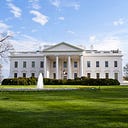A Government of the Future
“We cannot win the future with the government of the past.”
—President Barack Obama, State of the Union Address, January 25, 2011
The President is committed to creating a Government that makes a significant, tangible, and positive difference in the economy and the lives of the American people, and to driving lasting change in how Government works. This Administration has launched successful efforts to eliminate wasteful information technology (IT) spending, reduce the Federal real property footprint, modernize and improve citizen-facing services, and open tens of thousands of Federal data sets to spur innovation in the private sector. Yet, despite this progress, public trust in government remains low and there is more work to be done.
The Administration is ramping up its efforts to restore this trust through investments that modernize and improve how the Government serves citizens, and through initiatives that maximize the impact of taxpayer dollars. Past investments in management priorities have resulted in a significant return. For example, an $11 million investment funded the development and execution of the PortfolioStat initiative, a data-driven review of agency IT portfolios. This work, along with other OMB and technology reform and implementation efforts, has saved over $2.7 billion in the past three years. This represents a return on investment of nearly $245 for every $1 invested. In 2016, the Administration proposes over $450 million to drive forward progress on cross-agency management priorities. This includes new funding to support the teams leading cross-agency priority goals and to promote Federal spending transparency. It also increases support for ongoing initiatives—such as the U.S. Digital Service (USDS), PortfolioStat, Freeze the Footprint, and Open Data—that have already had an impact on improving Government operations.
The Budget fully supports the President’s Management Agenda, a comprehensive and forward-looking plan to modernize and improve government to ultimately deliver better, faster, and smarter services to citizens and businesses. The President’s Management Agenda is built on four pillars: Effectiveness—delivering world-class customer service to citizens and businesses; Efficiency—enhancing productivity and achieving cost savings across the Government; Economic Growth—opening Government-funded data and research to the public to spur innovation, entrepreneurship, economic growth, and job opportunities; and People and Culture—unlocking the full potential of today’s Federal workforce and building the workforce needed for tomorrow.
Since launching the Management Agenda last year, the Administration has seen significant initial success in each of these four pillars. The Administration launched the USDS, a small team of our Nation’s digital experts working to build the Federal Government’s capacity to deliver world-class services to the American people. We stepped up our focus on delivering better customer service, increased agency use of shared services and strategic sourcing, ramped up agency progress and compliance with the Administration’s open data policy, and started work on an ambitious plan for Senior Executive Service (SES) reform.
In addition to the Management Agenda, the Budget also supports the President’s plan to reorganize the Federal Government so that it does more for less, and is best positioned to assist businesses and entrepreneurs in the global economy.
You’ve just read Chapter 3:
A Government of the Future
